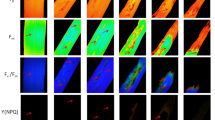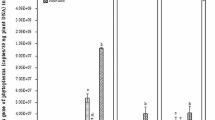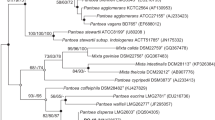Abstract
POTTED plants of susceptible Domains Sakel cotton (Gossypium barbodense, L.) and its synthesized blackarm-resistant strains containing B2 or B2 + B3 + B6 genes were sprayed when about three months old with a standardized water-suspension of Xanthomonas malvacearum taken from three-day-old cultures of a recent isolate. The plants were kept in the shade under glass bell-jars for 48 hr. after inoculation. The leaves used for determining respiration-rates were chosen from among fully expanded leaves 5 cm. in diameter situated at the ninth to thirteenth nodes of the stem.
This is a preview of subscription content, access via your institution
Access options
Subscribe to this journal
Receive 51 print issues and online access
$199.00 per year
only $3.90 per issue
Buy this article
- Purchase on Springer Link
- Instant access to full article PDF
Prices may be subject to local taxes which are calculated during checkout
Similar content being viewed by others
Author information
Authors and Affiliations
Rights and permissions
About this article
Cite this article
HASSAN, H., SABET, K. Effect of Infection by Xanthomonas malvacearum (E.F.S.) Dowson on Respiration-rate of Cotton Leaves. Nature 185, 177–178 (1960). https://doi.org/10.1038/185177a0
Issue Date:
DOI: https://doi.org/10.1038/185177a0
This article is cited by
-
Stress physiology in plant bacterial diseases
Proceedings / Indian Academy of Sciences (1969)
Comments
By submitting a comment you agree to abide by our Terms and Community Guidelines. If you find something abusive or that does not comply with our terms or guidelines please flag it as inappropriate.



